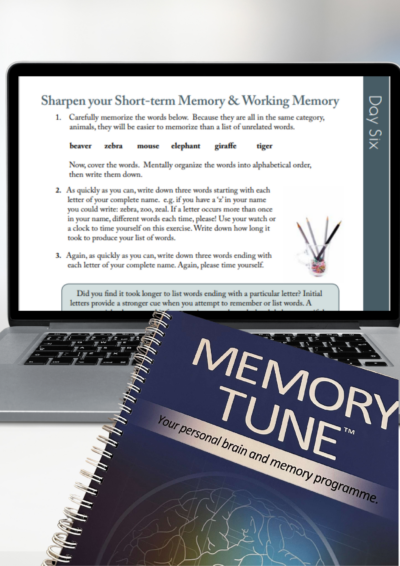Why?
Walking stimulates your brain.
The important parts of your brain that control thinking and memory.
They are the prefrontal cortex and medial temporal cortex and they have greater volume in people who exercise versus people who don’t.
“Even more exciting is the finding that engaging in a program of regular exercise of moderate intensity over six months or a year is associated with an increase in the volume of selected brain regions,” says Dr. Scott McGinnis, a neurologist at Brigham and Women’s Hospital and an instructor in neurology at Harvard Medical School.
Walking and other aerobic exercise also helps memory and thinking from the ability to reduce insulin resistance, reduce inflammation, and stimulate the release of chemicals in the brain that affect the health of brain cells, the growth of new blood vessels in the brain, and even the abundance and survival of new brain cells.
Indirectly, exercise improves mood and sleep and reduces stress and anxiety – problems in these areas frequently cause or contribute to cognitive impairment.
How much walking do I need?
Standard recommendations advise half an hour of moderate physical activity most days of the week, or 150 minutes a week.
Dr Jian Guan recommends ‘a gentle walk, 20 minutes a day.’
If that seems daunting, start with a few minutes a day, and increase the amount you exercise by five or 10 minutes every week until you reach your goal.
6 Tips to Keep You Walking
Walking is easy and free (except for a good pair of shoes), and can be done just about anywhere.
But it’s also easy to make excuses not to go.
Try one or more of these strategies to keep going.
Have a backup plan. For example, if you sleep in and miss your morning walk, you’ll know that you’re going to walk during lunch instead. Or, maybe you know that dinner with friends will prevent you from taking your evening stroll, so factor in a 15-minute walk in the morning and another before you meet your friends. And keeping a pair of walking shoes in your car gives you the option to squeeze in a walk whenever you have a little extra time.
Create a cue. Many daily habits happen because something signals you to do them, like brushing your teeth in the morning and before bed. Try triggering your walks with regularly scheduled activities, such as getting up in the morning or before you grab your food at lunchtime. Or maybe it is just putting on your walking shoes straightaway rather than later. Over time, you’ll associate walking with those activities, so they will remind you to take a walk.
Get a four-legged walking companion. Studies show that people who have dogs walk more. If this fits in with your life and circumstances, getting a dog could be the catalyst that turns you into a habitual walker. But even if you can’t commit to having a dog, there are still ways that man’s best friend can keep you moving. Offer to walk your neighbour’s dog, or ask a local shelter if they need a volunteer walker.
“Read” and walk. Audiobooks can make the time pass quickly while you’re walking. Make a pact with yourself that you can only listen to an audiobook during your walks; this will be positive motivation. If you are walking outdoors, keep the volume low and use only one earbud so you’ll remain alert to your surroundings in case of trouble.
Get a little rhythm. Music has been shown to inspire exercisers to go longer and harder. Remember the theme song from Rocky? Or Chariots of Fire? Just about any music that inspires you can add energy to your steps and keep you motivated. Start with songs that have a slower beat to warm up, then choose higher-energy ones for the middle of your walk, and finish with a slower, relaxing tune. You can even alternate fast and slow songs for a musical interval walk. Just remember to keep the volume low and use only one earbud if you’re walking outside.
Make a change. A new walking route, even if it’s just heading to the next neighbourhood, can invigorate your walking routine and will have the added bonus of jolting your brain to come out of auto-pilot. If that’s not possible, you can ring in changes to a tried-and-true route – like going earlier or later. Or invite someone new to join you. Different personalities and conversation topics will keep you engaged. And you’ll see things differently if you walk your usual route in the opposite direction.
Source: Harvard HealthBeat.
Do you have any other tips for Brain Tuners? Please leave a message below.
Here is Dr Jian Guan from the Centre for Brain Research.






I get bored walking the same route every day so to have a change I’ll drive to a different part of town. Seeing things I don’t normally see is good motivation to keep going and see more.
I struggle with walking due to health issues – always anxious that I will fall. So I frequently get a supermarket trolley and walk around the shopping mall for 15 – 20 mins
That’s an excellent strategy! Using your supermarket trolley or walker for support makes absolute sense. And you are still getting that important exercise. I understand that some shopping malls actually welcome walking groups in the early morning, too. Although fresh air is probably best, what a wonderful alternative if the weather isn’t suitable for walking outside. Keep it up!!
I love this strategy, too! Isn’t it amazing the things you notice when you are on foot compared with just whizzing past in the car? Of course, you need to keep your mind on the geography so you can find your car again in an unfamiliar area. More brain practice!
Interesting. All the emails from Gillian have been good.B
Love the trolley idea but I’m 10 kms drive from my nearest so on wet days or when I just can’t face the steep hills all around where I live, I walk round and round the outside of the house – I’m lucky to have decks on 3 sides and a flat path on the 4th! Only thing is I often get distracted by weeds needing to be pulled out or realising the windows need cleaning again. Ah well, life wasn’t meant to be easy, and I can sit down when I need to. Cheers!